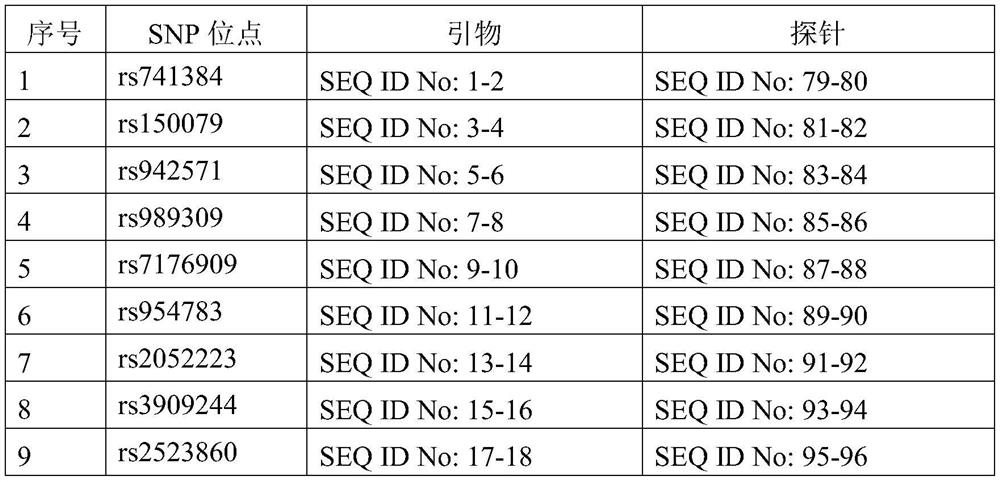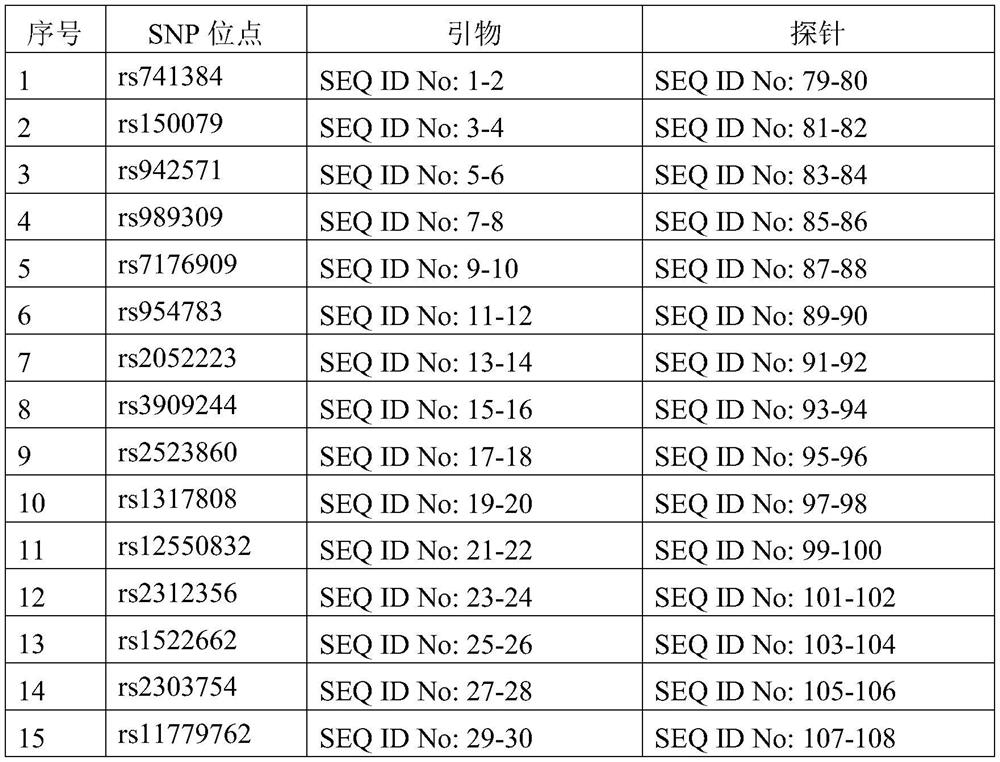Detection method for evaluating transplantation injury and rejection risk after liver transplantation
A detection method and liver transplantation technology, applied in the field of biomedicine, can solve the problems of influence of result accuracy, low accuracy and sensitivity, low sensitivity and specificity, etc., and achieve the effect of enhancing sensitivity and improving specificity and accuracy
- Summary
- Abstract
- Description
- Claims
- Application Information
AI Technical Summary
Problems solved by technology
Method used
Image
Examples
Embodiment 1
[0037] Example 1 Primer and Probe Sequence
[0038] The corresponding relationship between primers and probes used in the present invention and the targeted SNP sites is shown in the table below:
[0039]
[0040]
[0041]
[0042]
[0043] The above primers were synthesized at Invitrogen Trading (Shanghai) Co.
Embodiment 2
[0044] Example 2 Using the detection method provided by the present invention to assess the risk of graft injury and rejection after liver transplantation
[0045] 1. Sampling and extracting sample DNA
[0046] In a specific embodiment, with EDTANa 2 Anticoagulant tubes were used to collect the preoperative venous blood of clinical transplant patients (recipients) and part of the transplanted organs of the donors, and the nucleic acid extraction kit (DNeasy Blood and Tissue kit, QIAGEN Company) was used to extract human genomic DNA from the whole blood of the recipients. and human genomic DNA in donor tissues were quantified by NanoDrop 2000 and normalized to 30ng / μL.
[0047] 2. qPCR detection
[0048] ABI 7500 fluorescent quantitative PCR instrument was used to perform single-hole amplification on the DNA region where the 39 SNP sites were located.
[0049] The PCR reaction system is shown in the table below, wherein the qPCR reaction reagent is TAKARA-RR392A, and the nucle...
PUM
 Login to View More
Login to View More Abstract
Description
Claims
Application Information
 Login to View More
Login to View More - R&D
- Intellectual Property
- Life Sciences
- Materials
- Tech Scout
- Unparalleled Data Quality
- Higher Quality Content
- 60% Fewer Hallucinations
Browse by: Latest US Patents, China's latest patents, Technical Efficacy Thesaurus, Application Domain, Technology Topic, Popular Technical Reports.
© 2025 PatSnap. All rights reserved.Legal|Privacy policy|Modern Slavery Act Transparency Statement|Sitemap|About US| Contact US: help@patsnap.com



